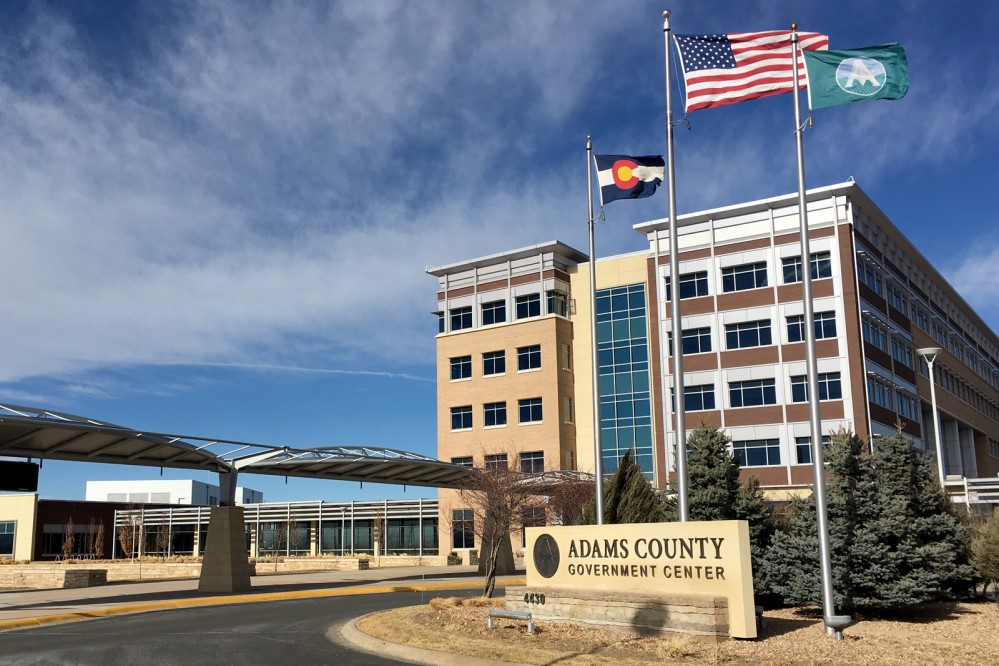
While everyone in the United States has been affected by the COVID-19 pandemic, not everyone has been affected equally. Latino communities suffered from physical, educational, and economic harm from the virus at higher rates than the general population:
- Latinos contracted COVID-19 at twice the rate of white, non-Hispanic Americans (the highest of any racial or ethnic group), were hospitalized at 2.8 times the rate, and died at 2.3 times the rate, according to the Centers for Disease Control and Prevention.
- Latino schoolchildren were the group most likely to attend school remotely during the pandemic and least likely to have live access to a teacher, according to a report from McKinsey & Company. This has led to widening educational gaps for Latinos and other students of color, who may feel the effects for years to come.
- The economic impacts of COVID-19 were especially devastating to Latinos, with double-digit increases in unemployment, underemployment, business losses, and difficulty making housing payments.
The reasons for the disproportionate economic damage from the pandemic on Latino families are multi-faceted and interrelated, with Latinos more likely to work in industries that were hard hit by the pandemic, such as tourism and hospitality, and more likely to hold jobs that could not be done remotely. Front-line work contributed to greater rates of COVID-19 among Latinos, which made parents reluctant to send their children to school, which exacerbated educational losses.
A common thread, though, ran through the related challenges: a lack of access to technology, and specifically to broadband. While broadband access has been an issue for years, a reliable internet connection became a necessity during the pandemic, helping protect Americans against its worst effects. Telehealth appointments, meetings with teachers, Zoom meetings for work, and other daily activities provided a lifeline for those who could access technology, and a source of additional hardship for those who couldn’t.
In a poll conducted early in the pandemic, 37% of Latino households said they lacked broadband internet connectivity or could only connect through their phones, a figure supported by other polls and studies. For families with no broadband access, this meant driving to the parking lot of public libraries and restaurants after work to enable their children to do homework, or missing work meetings because they were unable to connect.
For local governments, especially those with large Latino populations, the longstanding problems with connectivity exacerbated by the pandemic led to redoubled efforts to expand broadband access. Brownsville, Texas; Phoenix, Arizona; and Adams County, Colorado serve as case studies on how cities serving significant Latino populations have pivoted to address the digital divide. All took different approaches to encouraging access to broadband connectivity based on their unique circumstances and challenges.
Their approaches might not be right for every community, and there are many other local governments using innovative approaches to advance digital inclusion. But these case studies do give local government leaders ideas to consider as they seek to close the digital divide and reverse the vulnerabilities exposed by the pandemic.
Brownsville, Texas
In 2018, the U.S. Census ranked the border town of Brownsville the second least-connected city in the United States, just behind Laredo, Texas, with 30.9% of its households lacking any access to the internet—more than twice the national rate. The city’s own research found that more than half of Brownsville residents, and potentially as many as three quarters, lacked access to broadband internet, defined as 25 Mbps upload speed and 10 Mbps download speed. The implications were far-reaching, limiting opportunity for schoolchildren and adults alike while hamstringing the city’s efforts to attract new jobs and talent. Around 94% of the city identifies as Hispanic or Latino.
By 2019, with help from the Dallas Federal Reserve, the city had organized a community summit and formed a Digital Inclusion Task Force to find solutions to a problem that was limiting opportunity for residents and the ability to attract businesses and talent.
The problem became a full-blown crisis as the pandemic spread. Unemployment jumped from 5.8% to 17%, housing and food insecurity spread from 17.8% to over 31%, children had trouble connecting to their remote instruction, and businesses and workers struggled to apply for assistance. “The pandemic galvanized the community and also validated the challenge,” says Brownsville City Manager Noel Bernal. “There wasn’t any opposition or resistance to our efforts at expanding access before, but there was a lack of understanding as to why it was a problem. The pandemic made it clear.”
Seeing an opportunity to address a longstanding problem, the city committed to investing $20 million in a digital backbone for the city, commonly known as a “middle-mile” segment that links a core network to the local network (known as the “last mile”). This fiber route will not only make it easier for residents and businesses to access broadband connectivity, it will also be combined with utilities to enable digital water meters, digital streetlights, and other smart infrastructure. The city’s RFP was issued in June 2021, and they plan for the project to conclude by the end of 2023.
For Brownsville, investing in the middle mile and allowing private partners to manage the final mile of connecting to homes and businesses was the best solution, as last-mile solutions would have cost three times as much. But Bernal says there’s no one-size-fits-all when it comes to increasing broadband access.
“You have to understand community dynamics and what system or approach makes the most sense,” he says. “Everything has to be customized to your community. The issues are the same, but the approaches are going to be different.”
Phoenix, Arizona
Phoenix Councilwoman Laura Pastor understood the challenge of Phoenix’s digital divide from three different perspectives. As a member of the Phoenix Union High School District Governing Board, she saw how the pandemic upended education for secondary students, especially low-income students of color who lacked access to reliable broadband networks. As community liaison at Phoenix College, overseeing community relations for the designated Hispanic-Serving Institution, she saw how disruptive the pandemic was for post-secondary learners. And as an elected member of Phoenix’s City Council, she was a policy maker in a position to do something about it.
“She called me in May 2020 and said, ‘We’ve got to do something about the digital divide,’” recalls Phoenix Community and Economic Development Director Christine Mackay. Never mind that people have been working to close the digital divide since the internet was first created; the charge in Phoenix was to support students’ academic needs as soon as they possibly could.
“Students were having to wait until their parents came home from their job, maybe their two or three jobs, and then they had to take them to the public library or the community center or senior center, or McDonalds or Starbucks,” Mackay says. “The pandemic really showed us the fragility of access, and by erecting a wireless canopy over the city we solve the problem forever.”
While Phoenix officials understood the importance of internet access for job applications, benefits paperwork, and attending city council meetings, their sole focus during this initiative was educational. The project enables students to connect via broadband intranet directly to school from their homes. There’s no public access involved, and the connection can’t be used for anything that’s not related to school.
The concept is being rolled out first in the Census tracts designated as highest need, which are disproportionately Hispanic. While there are roughly the same number of Latinos in Phoenix as non-Hispanic whites, the poverty rate among Latinos is almost three times that of white residents. The broadband intranet will ensure students’ learning can continue no matter what the future brings. The effort is bringing access to 350,000 students for $28 million—farther reaching and less expensive than earlier proposals, which would have only helped 75,000 students for $100 million.
“As we roll this out across the city, we’re happy to share our playbook,” Mackay says. Broadband access “isn’t just an educational challenge—it’s a workforce development challenge.”
Adams County, Colorado
As the pandemic took hold in Adams County, Colorado, it wasn’t just students who scrambled to find a place with a decent internet connection. County Manager Ray Gonzales also saw teachers parked in the parking lots of county facilities, using county-supplied Wi-Fi to teach their classes.
Before the pandemic, the county made it a priority to add broadband access to all capital improvement projects. Now residents can use high-speed internet not only at the county government center and libraries, but at sheriff’s substations, maintenance facilities, and other locations. The county also sent mobile units with hotspots out into vulnerable neighborhoods to distribute vaccines and improve internet access simultaneously.
During the pandemic, “it was really an eye opener to see how everyone took advantage of broadband access,” Gonzales says. Officials are now discussing how to use funds from the American Rescue Plan to address obstacles to economic opportunity both in low-income urban neighborhoods in the county’s cities and the more rural eastern portions of the county. About 40% of Adams County residents are Hispanic or Latino.
“The pandemic really set our Latino community back to the 1980s,” Gonzales said. “It’s important as local government professionals to invest in these communities so that if we have another pandemic in the future, we are able to respond.”

RAYMOND H. GONZALES is president of the Local Government Hispanic Network and county manager of Adams County, Colorado.
New, Reduced Membership Dues
A new, reduced dues rate is available for CAOs/ACAOs, along with additional discounts for those in smaller communities, has been implemented. Learn more and be sure to join or renew today!
